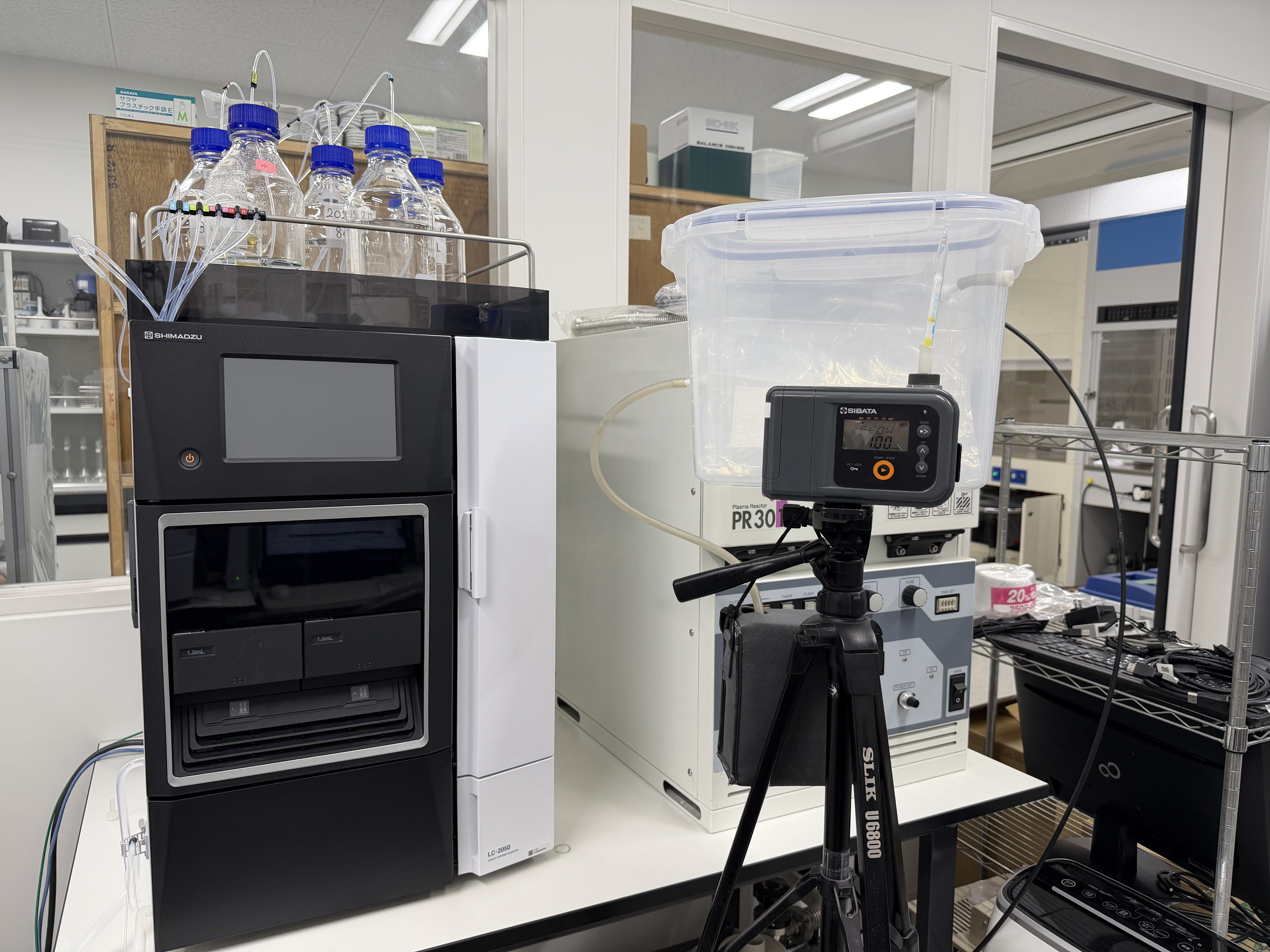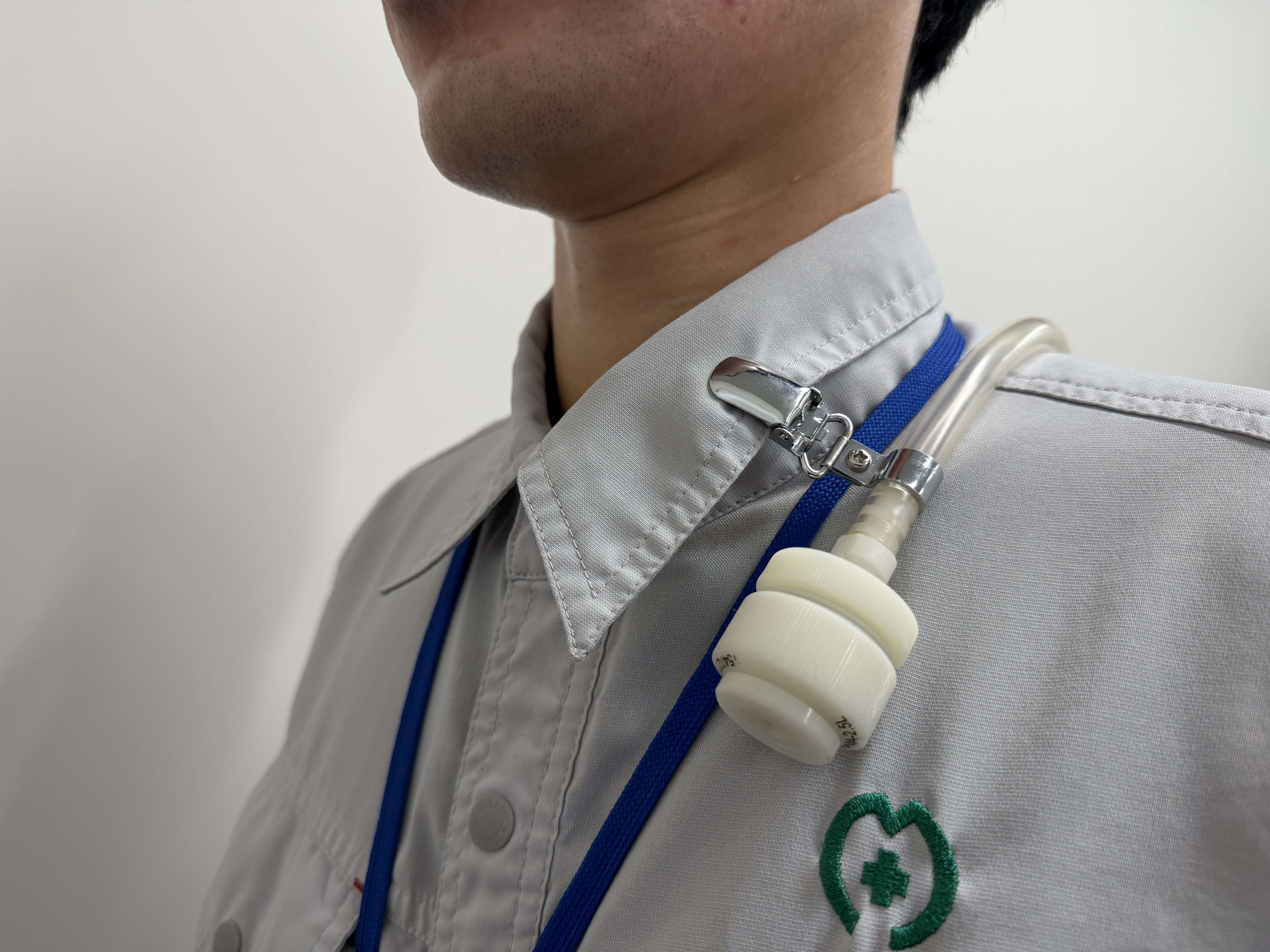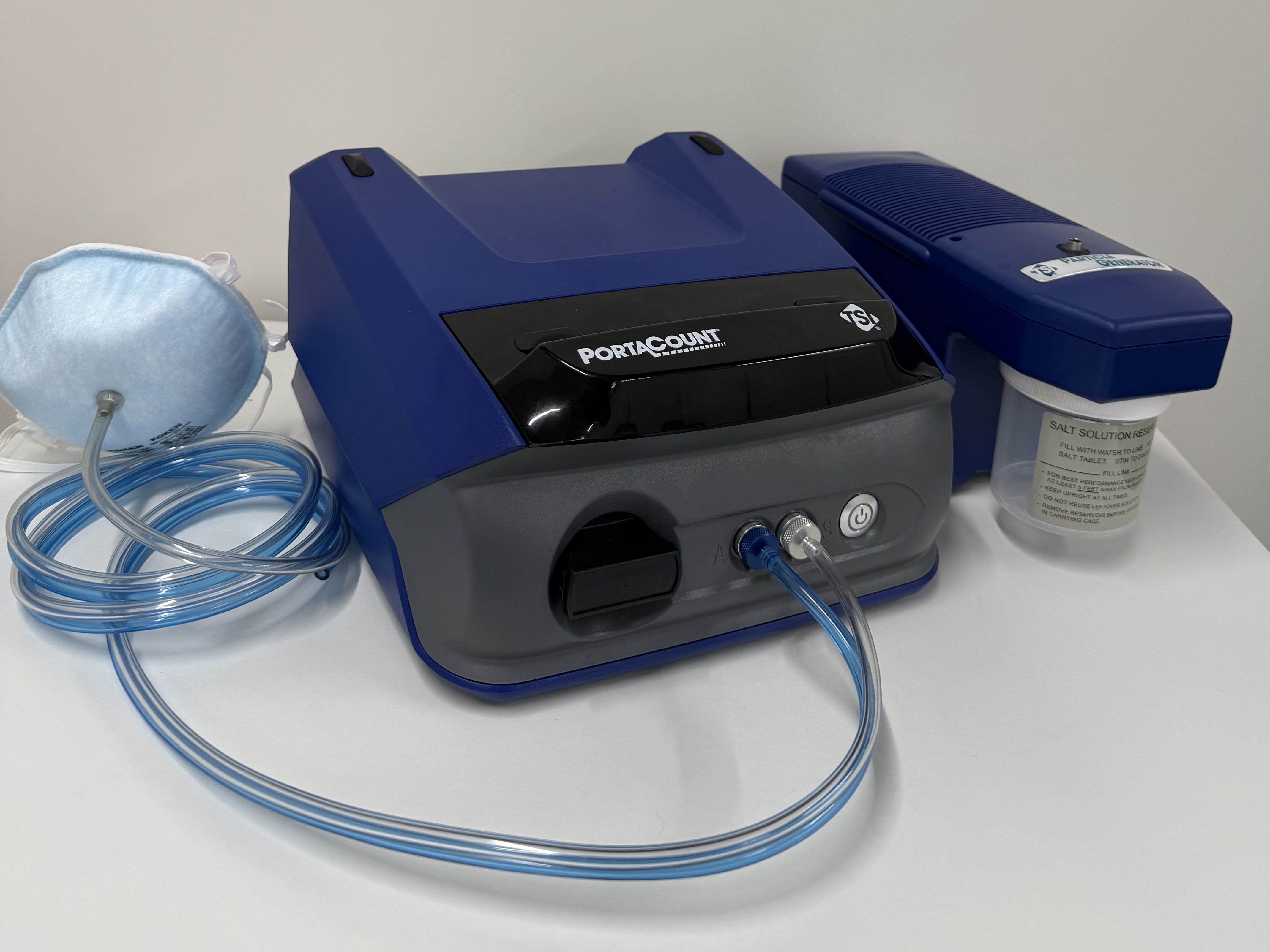Workplace monitoring
Work environment measurement / occupational health related measurements

Environmental conditions (how many harmful substances are present) of indoor businesses that handle organic solvents, etc. Measuring the work environment is performing measurements in order to grasp, quantifying results, and evaluating them.
- Chemical substance management experts
- Type 1 work environment measurer
- Hygiene engineering health manager
- Pollution Control Manager
- Work environment management experts
- Type 2 work environment measurer
- Odor inspector
Work environment measurement
In the work environment measurement, the following 2 measurement methods are set, depending on the work content, etc.It can be selected in order to correctly evaluate risks and lead to improvements (there are selection conditions)

A / B measurements
It is called “field measurement,” and a fixed measurement position is designed and set in the workplace, air concentrations at multiple points are sampled in a grid shape, and the results are evaluated. It is also used when setting and evaluating engineering measures (local exhaust devices, etc.) in workplaces.

C and D measurements
It is called the individual sampling method, and a sampler is attached to the worker's body to breathe
As a general rule, regional concentrations are sampled for 8 hours and the results are evaluated.
・Work in which workers move with the source of emission of hazardous substances - painting work
・Work involving multiple workplaces - testing, research work, etc.
Understand and manage risks lurking in the workplace
measurement area
- Work environment measurements (dust, organic solvents, specific chemical substances, metals, noise, etc.)
Personal Sampling Act
Mask fit test (quantitative method) - Welding fume concentration measurement
Exhaust port concentration measurement - Measurement of inhibitory concentration
- Local exhaust equipment periodic voluntary inspections, etc.
Equipment area
- Local exhaust system new installation / modification
- Gas detectors and related equipment
Drastic changes in work environment measurements
- At our company, specialized staff, starting with Class 1 work environment measurers, are responsible for measurement and environmental improvement work.
(*Type 1 and Class 2 work environment measurers, sanitary engineering health managers, local exhaust equipment regular voluntary inspectors, JSAA protective equipment advisors, etc.) - Ministry of Health, Labor and Welfare: New chemical substance regulations in the Occupational Safety and Health Act [PDF: 765KB]
Types of work environment measurements
There are 11 main types of work environment measurements.
Organic solvent measurement
Workplaces subject to measurement are generally indoor workplaces that manufacture or handle organic compounds that have the property of dissolving substances and are subject to regulations. There are 47 types of organic solvents that have measurement obligations.A work environment measurer must perform measurements on a regular basis, once every 6 months or less.
-min.avif)
The need for measurement
In laminating plants, etc., there is a risk that organic solvents (thinners) such as ethyl acetate used during lamination will vaporize and diffuse into the air.
-min.avif)
How to measure
The air in the workplace is sampled and the organic solvent content in the air is measured using a gas chromatograph.
Mineral dust measurement
The workplace to be measured emits significant debris, rocks, minerals, metals, or carbon dust,It is an indoor workshop where specific dust work (*) is carried out all the time.
A work environment measurer must perform measurements on a regular basis, once every 6 months or less.
※Specific dust work... Among the tasks where workers engaged in the work are recognized as having a risk of contracting pneumoconiosis,The source is a specific dust generator.

The need for measurement
The grinder workshop uses a disc-shaped grinding wheel to grind hard objects such as metal and rock. There is a risk that dust from grinding objects and grindstones will scatter into the workshop.
-min.avif)
How to measure
A digital dust meter is used to measure the amount of airborne dust in the workshop. Sampling is performed for 10 minutes and the average value is calculated. The workshop is evaluated by combining it with the mass of dust collected on the filter paper.
Measurement of specific chemical substances
Workplaces subject to measurement are generally indoor workplaces that manufacture or handle organic compounds that have the property of dissolving substances and are subject to regulations.
There are 47 types of organic solvents that have measurement obligations.
A work environment measurer must perform measurements on a regular basis, once every 6 months or less.
-min.avif)
The need for measurement
Exposure measures must be taken in workplaces that use specific chemical substances for business, such as chemical plants and laboratories. The air in the workplace can be measured and the risk of exposure can be confirmed beforehand.

How to measure
The air in the workplace is sampled and the organic solvent content in the air is measured using a gas chromatograph.
Noise measurement
Workplaces subject to measurement are indoor workplaces where work subject to regulations is performed among workplaces that generate significant noise.
Noise that changes over time is continuously measured for a fixed period of time, and its average value is evaluated.
Measurements must be performed regularly, once every 6 months.

The need for measurement
Generally, in factories, etc., the driving noise of machines used for work is loud, and it is said that there is a risk of causing hearing loss if you keep listening for a long time.

How to measure
Use a sound level meter to measure sound levels. Continuous sampling is performed every 10 minutes for 1 hour, and the workplace is evaluated with that average value.
Personal exposure measurement
Autonomous management of chemical substances has begun, and responses such as risk assessments are required at each business site. Currently, various risk assessment tools and measurement methods are offered We offer services using personal samplers and real-time monitors.
Harmful substances collected and samplers are attached to the worker's breathing area and analyzed and evaluated.
Also as a method of risk assessment and occupational health management,
Voluntary measurements are also carried out for individual exposure management etc. by measuring substances for which concentration reference values have been set. Responds to actual movements of workers, such as intermittent work, mobile work, close work, etc.
It is a measurement with a high degree of freedom.
※Comparative measurement of concentration reference values
We are proceeding with support for individual exposure measurements that are compared with concentration reference values. Since there are a wide range of substances for which reference values are set at the time of consultation, We will discuss the details in advance.
A pocketable monitor is attached to the worker, and the respiratory concentration during work is continuously measured and data is logged.
Next, data analysis is carried out, and by comparing with work records, etc., the timing and specific source of exposure are “visualized” and visually grasped.
We will use this information to improve the work environment.
(Usage)
・Risk assessments for chemical substances
・“ Visualization” of sources and high concentration points
・Confirming the effects of improving the work environment, “visualization”, etc.
-min.avif)
-min.avif)
Metal measurement
Workplaces subject to measurement are indoor workshops that handle metals as stipulated by law, and plating work, blacksmithing work, etc. are generally targeted.
There are 26 types of target substances, and they must be measured by a work environment measurer on a regular basis, once every 6 months or less.
*Lead is measured once every 1 year or less.
-min.avif)
The need for measurement
It depends on the type of metal, but in cadmium, for example, it is said that kidney and methylmercury may cause brain damage.

How to measure
An atomic absorption spectrophotometer or the like is used to analyze metals. This device uses the characteristic that atoms absorb light of a fixed wavelength for analysis.
Mask fit test
It is a mask fit test included in mandatory regulations for work such as metal arc welding that came into effect in Reiwa 3,Implementation of mask fit tests is also included in drastically changing laws and regulations.At our company, ※ specialized staff involved in work environment measurement work can handle fit test work using the quantitative method ※.
※ Individual Sampling Act Registered Work Environment Measurers Mask Fit Test Executors Course Completes
※ Compliant with Japanese Industrial Standard T8150 (How to Select, Use, and Maintain Respiratory Protectors)

Strengthening measures against workplaces in the third management category
Until now, measurements have been required at workplaces subject to work environment measurements, but in addition to this, from Reiwa 6/4/1, when work environment measurement results are classified as the “3rd control category,” the following measures will become mandatory.
Flow when classified with the third control category
- Listen to the opinions of external work environment management experts
- If improvements are possible, perform improvement measures and confirmation measurements and obtain the results Evaluating [Note in 1.2, when divided into the 3rd control category]
- Concentration measurements are performed using individual sampling methods, etc. Make them use effective respiratory protection according to the results
- Make sure the respiratory protection is properly worn (mask fit test)
[*Scope of application: Specific Chemical Substances Disability Prevention Regulations / Organic Solvent Poisoning Prevention Regulations / Lead Poisoning Prevention Regulations / Dust Obstruction Prevention Regulations]
Ministry of Health, Labor, and Welfare: Notice Overview [PDF format: 1017KB] We responded to the revisions mainly by work environment measurers We provide support for various measurement tasks, improvement measures, etc.

Technical guidelines on the application of concentration standards to prevent health hazards caused by chemical substances
In the new chemical substance management framework due to law revisions, it has become mandatory for workplaces that manufacture and handle certain chemical substances to be less than the concentration standard (concentration standard value) newly determined by the Ministry of Health, Labor, and Welfare. (Reiwa 6/4/1-)
Technical guidelines etc. have been announced in response to this
- Implementation of risk assessments relating to the hazards and harmfulness of chemical substances
- Confirmation measurement that the concentration is below the standard value when there is a risk of exceeding the standard value
- Appropriate selection and use of protective equipment
- Choosing the right protective equipment for inhalation (mask fit test)
Details such as these have been made public. (There are various conditions and selectivity) Also, according to the same guidelines
- When carrying out confirmation measurements, a work environment measurer is involved to ensure accuracy Desirable.
- Conventional methods for measuring work environments are preferable when implementing engineering measures such as local exhaust devices as risk reduction measures based on risk assessment results
As mentioned above, the involvement of work environment measurers has also been mentioned, and future We are accepting support and cooperation for occupational safety and health measures.
Welding fume concentration measurement
It is a regulation that was applied from Reiwa 3/4, and for businesses that continue to perform welding work etc. indoors,Welding fume concentration measurements and mask fit tests have become mandatory.

We carry out measurements at over 70 business sites in the first year, including business trip support, and please inquire about related obligation responses, etc.
Ministry of Health, Labor, and Welfare: Notice Overview [PDF format: 1017KB] We responded to the revisions mainly by work environment measurers We provide support for various measurement tasks, improvement measures, etc.
Welding fume concentration measurement
Ministry of Health, Labor, and Welfare: Notice Overview [PDF format: 1017KB] We responded to the revisions mainly by work environment measurers We provide support for various measurement tasks, improvement measures, etc.
Mask fit test
Check the proper wearing of effective respiratory protection at a frequency of once a year
* At our company, mask fit tests are carried out based on the revised JIS T 8150 standard by work environment measurement measurers who have completed the mask fit test operator course.
Contact
Please feel free to contact us if you have any problems with improving the environment.



-min.avif)





